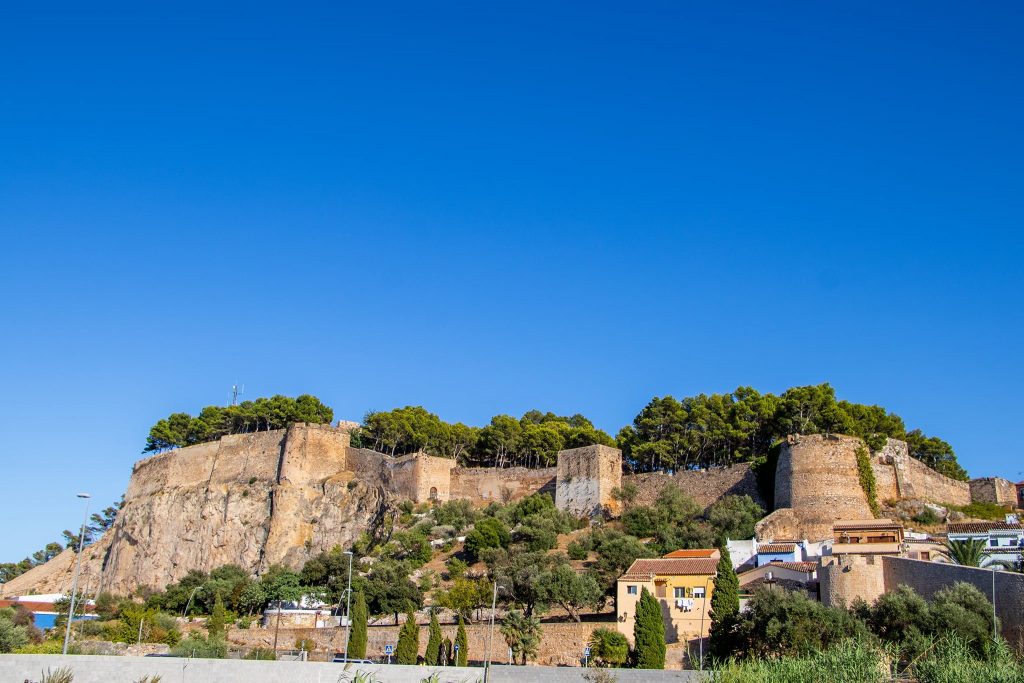The Castle of Denia stands as a timeless monument, a guardian of history perched above the bustling town of Denia, Spain. This fortress is not just a relic of the past but a beacon that has witnessed the evolution of civilizations, cultures, and epochs. As we delve into the depths of its history, architecture, significance, and the experiences it offers today, we uncover the layers that make the Castle of Denia a must-visit for history enthusiasts, culture vultures, and curious travelers alike.
Historical Overview
The Castle of Denia's origins can be traced back to the 11th century, during the Islamic period of the Iberian Peninsula. Its strategic location, overlooking the Mediterranean Sea, made it a vital point of defense and a nexus of trade routes. Over the centuries, it has been under the rule of various dynasties and powers, including the Muslims, Christians, and the Crown of Aragon, each leaving a distinct mark on its structure and purpose.
The castle's most transformative era came during the reign of the Moors, who fortified it and established the town of Denia as a critical maritime and commercial hub. Following the Reconquista, the castle underwent significant modifications to adapt to the changing military technologies and strategies of the time.
Architectural Splendor
The architecture of the Castle of Denia is a palimpsest of the various cultures that have inhabited it. The Islamic influence is evident in its original design and layout, characterized by robust walls, strategic battlements, and the use of local materials. The subsequent Christian dominion introduced Gothic and Renaissance elements, transforming the castle into a more conventional European fortress while retaining its unique Moorish essence.
One of the castle's most striking features is the Vila Vella (Old Town), enclosed within its walls, containing ancient buildings, narrow streets, and hidden corners, telling tales of a bygone era. The Torre del Consell (Council Tower) offers panoramic views of Denia and its surroundings, a testament to its strategic importance.
Cultural and Historical Significance
The Castle of Denia is more than just a monument; it is a symbol of the cultural confluence and historical tumult that have shaped the region. It has been a witness to piracy, conquests, and reconquests, embodying the resilience and adaptability of its people. The castle has also played a crucial role in the defense against invasions, serving as a protective barrier for the town and its inhabitants.
Today, it stands as a testament to the rich tapestry of Spanish history, offering insights into the medieval way of life, architectural evolution, and the strategic significance of Denia throughout the ages.
Experiencing the Castle Today
Visiting the Castle of Denia is an immersive experience, transporting one back in time. The site is meticulously preserved, allowing visitors to explore its walls, towers, and the remnants of its past inhabitants. The Archaeological Museum, housed within the castle, showcases artifacts and exhibits that narrate the castle's and the town's history, from its Iberian roots to the present day.
The climb to the castle is an experience in itself, winding through the narrow lanes of the old town, each turn revealing a piece of history or a breathtaking view. The castle also hosts cultural events, exhibitions, and concerts, bringing its ancient stones to life and connecting the past with the present.
For those seeking to capture the essence of medieval Spain, the Castle of Denia offers guided tours that delve deep into its history, legends, and architectural marvels. These tours provide a comprehensive understanding of the castle's role in shaping the region's destiny.
Conservation Efforts
The preservation of the Castle of Denia is a testament to the importance of safeguarding cultural heritage. Continuous conservation efforts ensure that the castle remains in good condition, allowing future generations to explore and learn from its history. These initiatives also involve the local community and visitors, fostering a sense of ownership and responsibility towards this historic landmark.
Conclusion
The Castle of Denia is a jewel in the crown of Spanish heritage, a monument that encapsulates the spirit of the past while embracing the present. Its walls echo the stories of those who walked before us, offering a tangible connection to history that is increasingly rare in our modern world. Whether you are drawn by the allure of ancient architecture, the tales of bygone eras, or the simple beauty of its vantage points, the Castle of Denia awaits, ready to unveil its secrets and charm to those who seek them
Frequently Asked Questions (FAQs)
What is the historical significance of the Castle of Denia?
The Castle of Denia is a significant historical monument that dates back to the 11th century, showcasing the cultural confluence of the Islamic, Christian, and the Crown of Aragon periods in Spain
Can you visit the Castle of Denia?
Yes, the Castle of Denia is open to the public. Visitors can explore its ancient walls, towers, and the Archaeological Museum to learn about its rich history and cultural heritage
What architectural styles are evident in the Castle of Denia?
The Castle of Denia features a blend of Islamic, Gothic, and Renaissance architectural styles, reflecting the diverse cultures that have influenced its construction and evolution over the centuries
Are there guided tours available at the Castle of Denia?
Yes, guided tours are available at the Castle of Denia, offering insights into its history, architecture, and the strategic significance of the site through expert narration
What can you see from the Castle of Denia?
From the Castle of Denia, visitors can enjoy panoramic views of the town of Denia, the Mediterranean Sea, and the surrounding landscape, offering a unique perspective on the region's geography and beauty

Pingback: What is Denia Famous For? | Car Hire Denia
Pingback: In Denia: A Treasure Trove of Activities and Experiences | Car Hire Denia